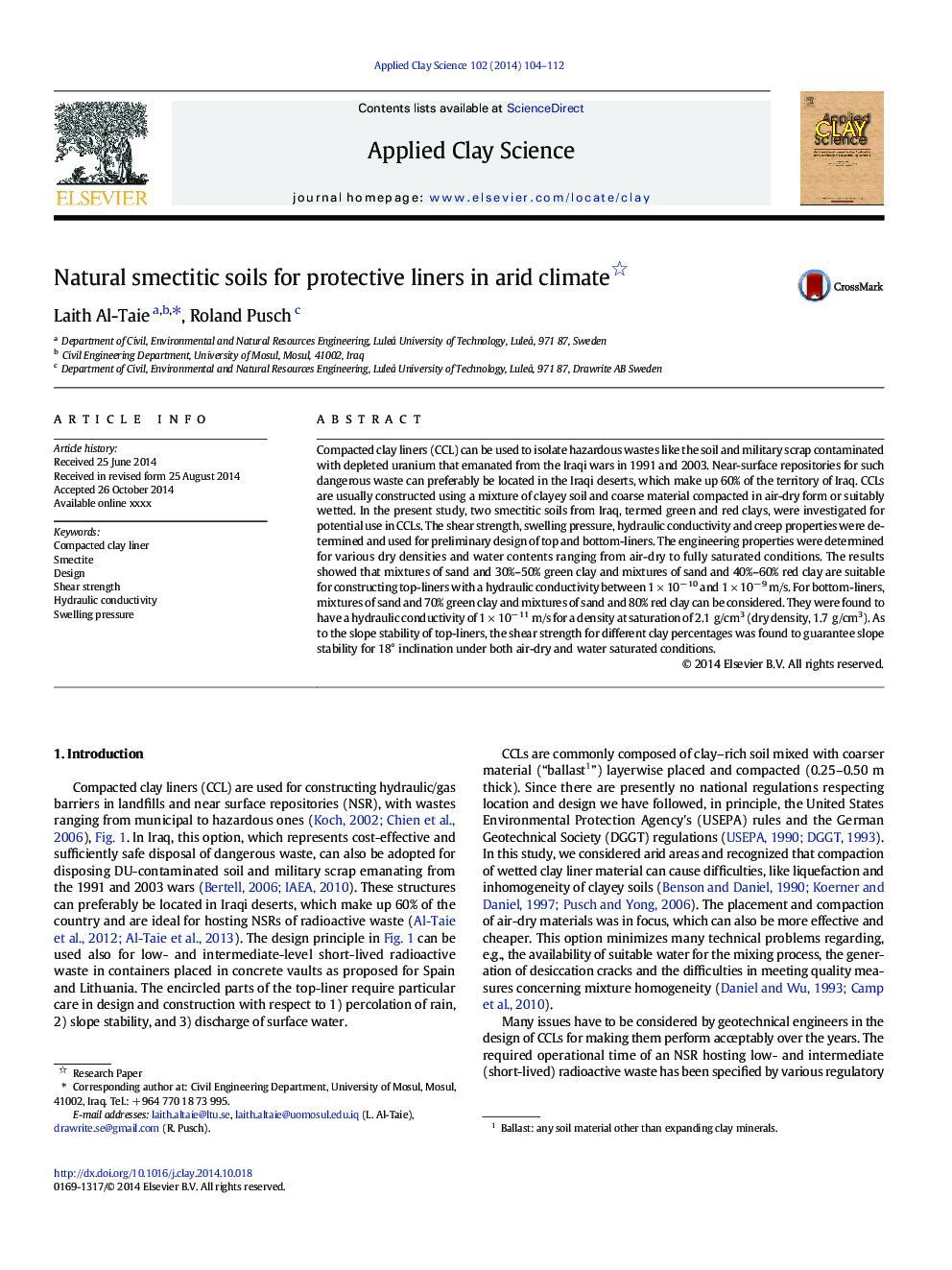| Article ID | Journal | Published Year | Pages | File Type |
|---|---|---|---|---|
| 8046614 | Applied Clay Science | 2014 | 9 Pages |
Abstract
Compacted clay liners (CCL) can be used to isolate hazardous wastes like the soil and military scrap contaminated with depleted uranium that emanated from the Iraqi wars in 1991 and 2003. Near-surface repositories for such dangerous waste can preferably be located in the Iraqi deserts, which make up 60% of the territory of Iraq. CCLs are usually constructed using a mixture of clayey soil and coarse material compacted in air-dry form or suitably wetted. In the present study, two smectitic soils from Iraq, termed green and red clays, were investigated for potential use in CCLs. The shear strength, swelling pressure, hydraulic conductivity and creep properties were determined and used for preliminary design of top and bottom-liners. The engineering properties were determined for various dry densities and water contents ranging from air-dry to fully saturated conditions. The results showed that mixtures of sand and 30%-50% green clay and mixtures of sand and 40%-60% red clay are suitable for constructing top-liners with a hydraulic conductivity between 1 Ã 10â 10 and 1 Ã 10â 9 m/s. For bottom-liners, mixtures of sand and 70% green clay and mixtures of sand and 80% red clay can be considered. They were found to have a hydraulic conductivity of 1 Ã 10â 11 m/s for a density at saturation of 2.1 g/cm3 (dry density, 1.7 g/cm3). As to the slope stability of top-liners, the shear strength for different clay percentages was found to guarantee slope stability for 18° inclination under both air-dry and water saturated conditions.
Related Topics
Physical Sciences and Engineering
Earth and Planetary Sciences
Geochemistry and Petrology
Authors
Laith Al-Taie, Roland Pusch,
